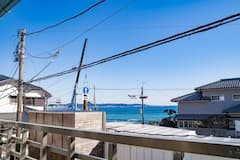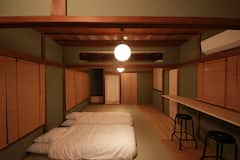Jochi-ji is a Buddhist Zen temple in Kamakura, which was built back in Kamakura Era in 1283 that is within a 10 minute walkable distance from Kita Kamakura train station. Jochi-ji is surrounded by the rich green leafiness of Kamakura, not a big temple like many others in the area, giving it a quiet, calm environment for those who seek peace of moment. If you enjoy visiting quiet temples, this is a great place to visit as it is not usually very busy and or crowded like many others in the area.
Enjoy a nice and leafy hike to Jochi-ji away from the crowds

Like many temples and shrines in Kamakura, Jochi-ji is also somewhere you can easily access on foot. It is only 10 minutes walk from Kita Kamakura train station, but is also completely accessible even if you decide to walk from Kamakura station, which is 2.2km away and takes about 30 minutes. If you want to enjoy seeing the nature and township of Kamakura, I highly recommend you to hike around Kamakura and have Jochi-ji as one of your travel stops, especially after visiting the more crowded temples and shrines. It does not directly face a main street, so it’s a little hidden which gives a nice quiet and calm feeling to the temple. To get to the entrance of the temple, you will be walking up the stone stairs surrounded by rich green of Kamakura.
Take your time and have a good long look at the historical buildings

As mentioned earlier, one of the most attractive things about Jochi-ji is how tranquil the temple is, thus you get plenty of quiet and personal time to just enjoy a moment in this historical sanctuary. In front of the Buddhist sanctum of this butsuden main hall, there is a nice space with chairs where locals and travelers can just sit down and read a book or do a drawing of a temple. It is somewhere where nobody rushes you in enjoying the moment and where you can get a good look at these historical monuments that are registered as Japan’s cultural property. In addition, unlike some other temples and shrines, you can take photographs pretty freely here in Jochi-ji, which is also a bonus for travelers. As a traveler, you will want to respect the host g country’s rules and some temples and shrines do not allow certain areas to be photographed. However, at Jochi-ji, you can photograph pretty freely around the temple.
Have a hands-on experience at Jochi-ji

As well as being able to photograph freely, you can also get a more hands on experience at Jochi-ji like being able to touch a belly of one of the gods. At Jochi-ji, you can see one of Shichi-Fuku-Jin, the Seven Deities of Good Fortune, Hotei. Hotei is a god who is said to be the only Buddhist monk of all the Seven Deities of Good Fortune who truly existed and has a big round belly that is said to bring fortune to us from the sack his is carrying. If you walk around Jochi-ji, meet Hotei and touch his belly, you might be lucky enough to receive his good fortune. Because so many people rub his belly, you can see in the picture that it now has a different color from rest of his body.
You might be interested in these Airbnbs!
Marvel at the delicate balance between man and nature surrounding Jochi-ji

When you walk around Jochi-ji, you will run into some statues of raccoons at one area near some bamboo. They are “tanuki,” a Japanese species of raccoon and “civet”, cat-like mammal often found in tropical Asia. They look rather comical, but there is a reason for them to be here. It is because there are raccoons and civets living behind Jochi-ji in the mountains, and sometimes they come down the mountains and get hit by cars and die. Jochi-ji thus provides a place for these lost souls to be respected and cared for in the raccoon mound.
Japanese temples and shrines have historically been built to co-exist with the surrounding nature and Jochi-ji is a good example of this. Aside from the impressive historical architectures you can observe, you can also witness how the mindset of Japanese Buddhist philosophy works.
Lose yourself in the green of Jochi-ji
Kamakura is one of my most favorite travel destinations in Japan and I often make my way there in my free time. The truth is, it was my first time visiting Jochi-ji this time, even though I have visited many other temples and shrines more than a few times, some even as many as five times already, and I wished I knew about Jochi-ji earlier. This is a temple, which exists so softly and kindly. It is quiet, calm, and so peaceful that you just want to sit down and enjoy being there if you have the time to spare. Many of the other temples and shrines are packed with tourists even on the weekdays, so if you want a little break from over-crowded temples, this is a great temple to visit. It is only 200 JPY (1.6 USD) entry for adults and only 100 JPY (0.8 USD) for children and is open from 9:00am to 5:00pm on weekdays and 9:00am to 16:30pm on weekends.
History
Get Trip101 in your inbox
Unsubscribe in one click. See our Privacy Policy for more information on how we use your data




















Create an account to